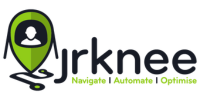As a small business owner, you probably feel like your days are filled with endless tasks to keep your business running, from managing employees to monitoring finances, and everything in between. However, one crucial component that many small business owners overlook is their sales process and pipeline. Contrary to popular belief, you have a sales process and pipeline, even if it is only in your head or the heads of your sales team. In this blog post, I, an automation specialist, will talk about why having a sales pipeline is vital for small business owners and what each stage of the sales process entails.
What is a sales pipeline or funnel, and why do I need one?
Before we dive into the stages of a sales pipeline, let’s first discuss what a sales pipeline or funnel is and why it’s essential for your business. A sales pipeline is a visual representation of your sales process, from prospecting to closing the deal. It allows you to track the progress of your leads and opportunities and helps you identify areas of improvement in your sales process. By having a system in place, you can track your sales activities and know where your focus should be to close more deals and grow your business.
Stages of a sales pipeline
1.Prospecting
The first stage of a sales pipeline is prospecting or lead generation. This is where you identify potential customers who may be interested in your product or service. You can generate leads through various methods such as cold calling, email marketing, social media, and networking events. The goal of prospecting is to gather as much information as you can about the potential customer, their needs, and if they are the right fit for your business.
2.Connection
After you’ve identified potential customers, the next stage is to establish a connection with them. This is where you begin building a relationship with the prospect, showing them that you understand their needs, and how your product or service can help them. You can achieve this by providing value, educating them on your product or service, and answering any questions they may have.
3.Qualifying
Once you’ve established a connection with a prospect, the next step is to determine if they are a good fit for your business. Qualifying involves assessing whether the prospect has a need for your product or service, the authority to make a buying decision, and whether they have the budget to afford your solution.
4.Proposal
If the prospect meets the qualifying criteria, the next stage is to present them with a proposal. The proposal should include details about your product or service, its benefits, and how it addresses their specific needs. It’s essential to provide a clear and concise proposal that addresses any questions or concerns they may have.
5.Negotiation
After presenting the proposal, the prospect may have questions or want to negotiate the terms of the agreement. This stage of the sales process involves working with the prospect to reach a mutually acceptable agreement that benefits both parties.
6.Agreement
Once you’ve reached an agreement, the next step is to formalize it with a contract or purchase order. This is where you outline the terms of the agreement, including delivery schedules, payment terms, and any other specifics related to the transaction.
7.Onboarding
Once the agreement is signed, the next stage is onboarding. Onboarding involves working with the customer to ensure they know how to use your product or service and have everything they need to get started. This stage is crucial for customer satisfaction and long-term success.
8.Continual Communication
The final stage of a sales pipeline is continual communication. It’s essential to have ongoing communication with your customers to ensure that they are satisfied with your product or service and to address any issues or concerns they may have. Building a relationship with your customers is crucial to business success, as it can lead to repeat business, referrals, and positive reviews.
Conclusion
In conclusion, a sales pipeline is a crucial tool for small business owners looking to grow their business. By automating your sales process, you can free up time to focus on other important areas of your business and ensure that you are providing your customers with the best possible experience. The stages of a sales pipeline, from prospecting to continual communication, provide a roadmap to guide your sales activities and help you close more deals. The three takeaways from this blog post are to automate what’s working for your business right now, continually look to optimize your sales process to generate better results, and focus on building relationships with your prospects and customers. By implementing a sales pipeline, you can take your business to the next level and achieve long-term success.





